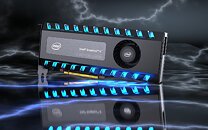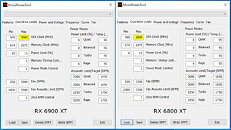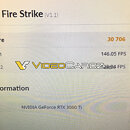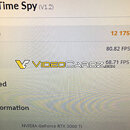
GALAX RTX 5090D HOF XOC LE Card Overclocked to 3.27 GHz, Record Breaking Prototype Enabled w/ Second 12V-2×6 Connector
As reported last month, GALAX had distributed prototypes of its upcoming flagship "Hall of Fame" (HOF) card—based on NVIDIA's Chinese market exclusive GeForce RTX 5090D GPU—to prominent figures within the PC hardware overclocking community. Earlier examples sported single 12V-2×6 power connectors, although GALAX's exposed white PCB design showed extra space for an additional unit. Evaluators conducted experiments involving liquid nitrogen-based cooling methods. The most vocal of online critics questioned the overclocking capability of initial GeForce RTX 5090D HOF samples, due to limitations presented by a lone avenue of power delivery. A definitive answer has arrived in the form of the manufacturer's elite team-devised GeForce RTX 5090D HOF Extreme Overclock (XOC) Lab Limited Edition candidate; a newer variant that makes use of dual 12V-2×6 power connectors. Several overclocking experts have entered into a GALAX-hosted competition—Micka:)Shu, a Chinese participant, posted photos of their test rig setup (see below).
Micka's early access sample managed to achieve top placement GPU on UL Benchmarks' 3DMark Speed Way Hall of Fame, with a final score of 17169 points. A screenshotted GPU-Z session shows the card's core frequency reaching 3277 MHz. Around late January, ASUS China's general manager (Tony Yu) documented his overclocking of a ROG Astral RTX 5090 D GAMING OC specimen up to 3.4 GHz; under liquid nitrogen cooled conditions. GALAX has similarly outfitted its flagship model with selectively binned components and an "over-engineered" design. The company's "bog-standard" HOF model is no slouch, despite the limitation imposed by a single power connector. The GALAX OC Facebook account sent out some appreciation to another noted competitor (and collaborator): "thanks to Overclocked Gaming Systems—OGS Rauf for help with the overclock of GeForce RTX 5090D HOF, and all of (our) GALAX products." The OGS member set world records with said "normal" HOF card—achieving scores of 59,072 points in 3DMark's Fire Strike Extreme project, and 25,040 points in Unigine Superposition (8K-optimized).
Micka's early access sample managed to achieve top placement GPU on UL Benchmarks' 3DMark Speed Way Hall of Fame, with a final score of 17169 points. A screenshotted GPU-Z session shows the card's core frequency reaching 3277 MHz. Around late January, ASUS China's general manager (Tony Yu) documented his overclocking of a ROG Astral RTX 5090 D GAMING OC specimen up to 3.4 GHz; under liquid nitrogen cooled conditions. GALAX has similarly outfitted its flagship model with selectively binned components and an "over-engineered" design. The company's "bog-standard" HOF model is no slouch, despite the limitation imposed by a single power connector. The GALAX OC Facebook account sent out some appreciation to another noted competitor (and collaborator): "thanks to Overclocked Gaming Systems—OGS Rauf for help with the overclock of GeForce RTX 5090D HOF, and all of (our) GALAX products." The OGS member set world records with said "normal" HOF card—achieving scores of 59,072 points in 3DMark's Fire Strike Extreme project, and 25,040 points in Unigine Superposition (8K-optimized).














































